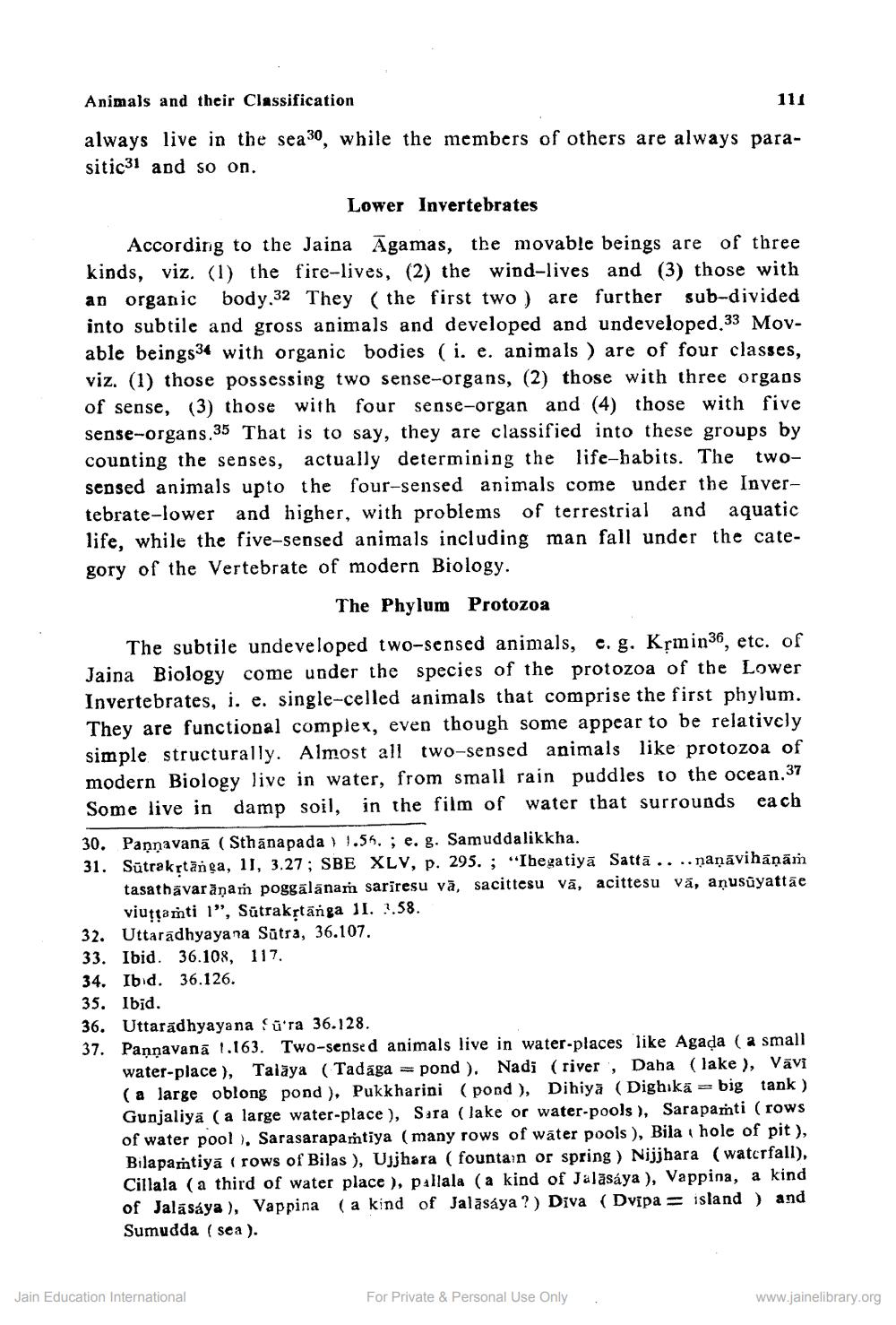________________
Animals and their Classification
111
always live in the sea 30, while the members of others are always parasitic31 and so on.
Lower Invertebrates
According to the Jaina Agamas, the movable beings are of three kinds, viz. (1) the fire-lives, (2) the wind-lives and (3) those with an organic body.32 They (the first two ) are further sub-divided into subtile and gross animals and developed and undeveloped.33 Movable beings34 with organic bodies (i. e. animals ) are of four classes, viz. (1) those possessing two sense-organs, (2) those with three of sense, (3) those with four sense-organ and (4) those with five sense-organs,35 That is to say, they are classified into these groups by counting the senses, actually determining the life-habits. The twosensed animals upto the four-sensed animals come under the Invertebrate-lower and higher, with problems of terrestrial and aquatic life, while the five-sensed animals including man fall under the category of the Vertebrate of modern Biology.
The Phylum Protozoa
The subtile undeveloped two-sensed animals, e. g. Krmin36, etc. of Jaina Biology come under the species of the protozoa of the Lower Invertebrates, i. e. single-celled animals that comprise the first phylum. They are functional complex, even though some appear to be relatively simple structurally. Almost all two-sensed animals like protozoa of modern Biology live in water, from small rain puddles to the ocean.37 Some live in damp soil, in the film of water that surrounds each 30. Pannavanā (Sthānapada 1.55, ; e. g. Samuddalikkha. 31. Sūtrakrtānga, 11, 3.27; SBE XLV, p. 295. ; "Ihega tiya Sattā....naņāvihāņām
tasathāvarāņam poggälānam sariresu vā, sacittesu va, acittesu vä, anusuyattae
viuţtanti l", Sūtrakrtānga lI. ?.58. 32. Uttaradhyaya na Sūtra, 36.107. 33. Ibid. 36.108, 117. 34. Ibid. 36.126. 35. Ibid. 36. Uttaradhyayana ü'ra 36.128. 37. Pannavanā 1.163. Two-sensed animals live in water-places like Agada ( a small
water-place }, Talāya (Tadaga = pond ). Nadi (river, Daha (lake), Vāvi (a large oblong pond ), Pukkharini (pond ), Dihiyā (Dighikā = big tank ) Gunjaliya (a large water-place), Sara (lake or water-pools), Sarapamti ( rows of water pool ), Sarasarapamtiya (many rows of water pools), Bila hole of pit ), Bilapamtiyā (rows of Bilas ), Ujjhara ( fountain or spring ) Nijjhara (waterfall), Cillala (a third of water place ), pallala (a kind of Jalāsáya ), Vappina, a kind of Jalāsáya ), Vappina (a kind of Jalāsáya ? ) Diva (Dvipa island) and Sumudda (sea).
Jain Education International
For Private & Personal Use Only
www.jainelibrary.org




